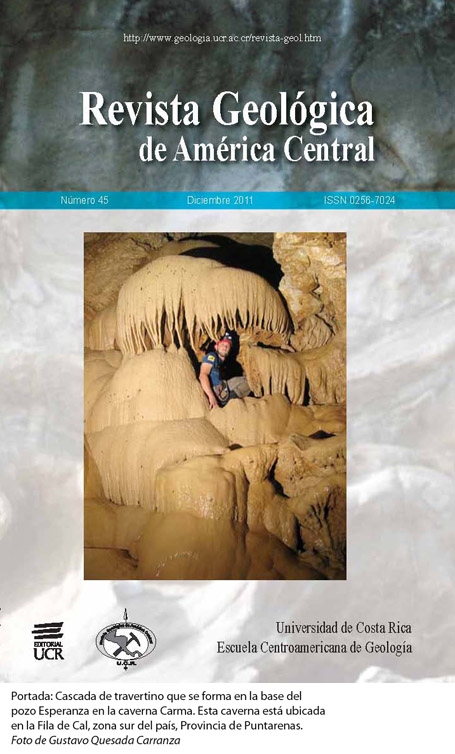Abstract
To better estimate the extrusive flux of the Central American Arc, from 2002-2008, we obtained sixty one high precision 40Ar/39Ar ages on geographically well-situated lavas and tephra from Costa Rica and Nicaragua. Here, we describe a number of observations encountered during this study using four examples that well document the preci- sion, accuracy and general reliability of the 40Ar/39Ar ages. First, low K2O values, particularly in samples from Nicara- gua, is a major limitation in or attempts to obtain reliable dates on samples under 1 My. Second, extensive weathering of samples due to the tropical climate of Central America has resulted in various levels of argon loss even when the hand sample appeared unaltered. Third, our field and geochronological data lead us to conclude that eruptive rates have not been constant over the past 15 to 20 My, but rather appears punctuated by gaps of up to several million years. We attempted to address the temporal gaps in several ways. First, geochemical analyses were used to identify samples that may have erupted during time periods without known volcanism. For example, U/Th values in the active Central American arc are significantly higher than those obtained from the Miocene Coyol Group except for four samples with intermediate values that were dated to determine if their ages were intermediate as well. However, all of these samples were found to be from a period with known volcanism. Second, we sought to locate the oldest sections of the active arc and the youngest sections of the Coyol Group in order to better constrain the timing and duration of the apparent gap in volcanic productivity. This approach also failed to locate samples from periods without known volcanism. When these methods proved largely unsuccessful, our focus shifted to dating regions of minor volcanism between the active and Coyol volcanic fronts as well as between Cosigüina and San Cristóbal, the longest stretch of the Central American Volcanic Front without active volcanism. This effort yielded ages on samples ranging from 1.1 to 3.6 Ma and, thus, substantially reduced the apparent volcanic gap in Nicaragua.Comments
Downloads
Download data is not yet available.






